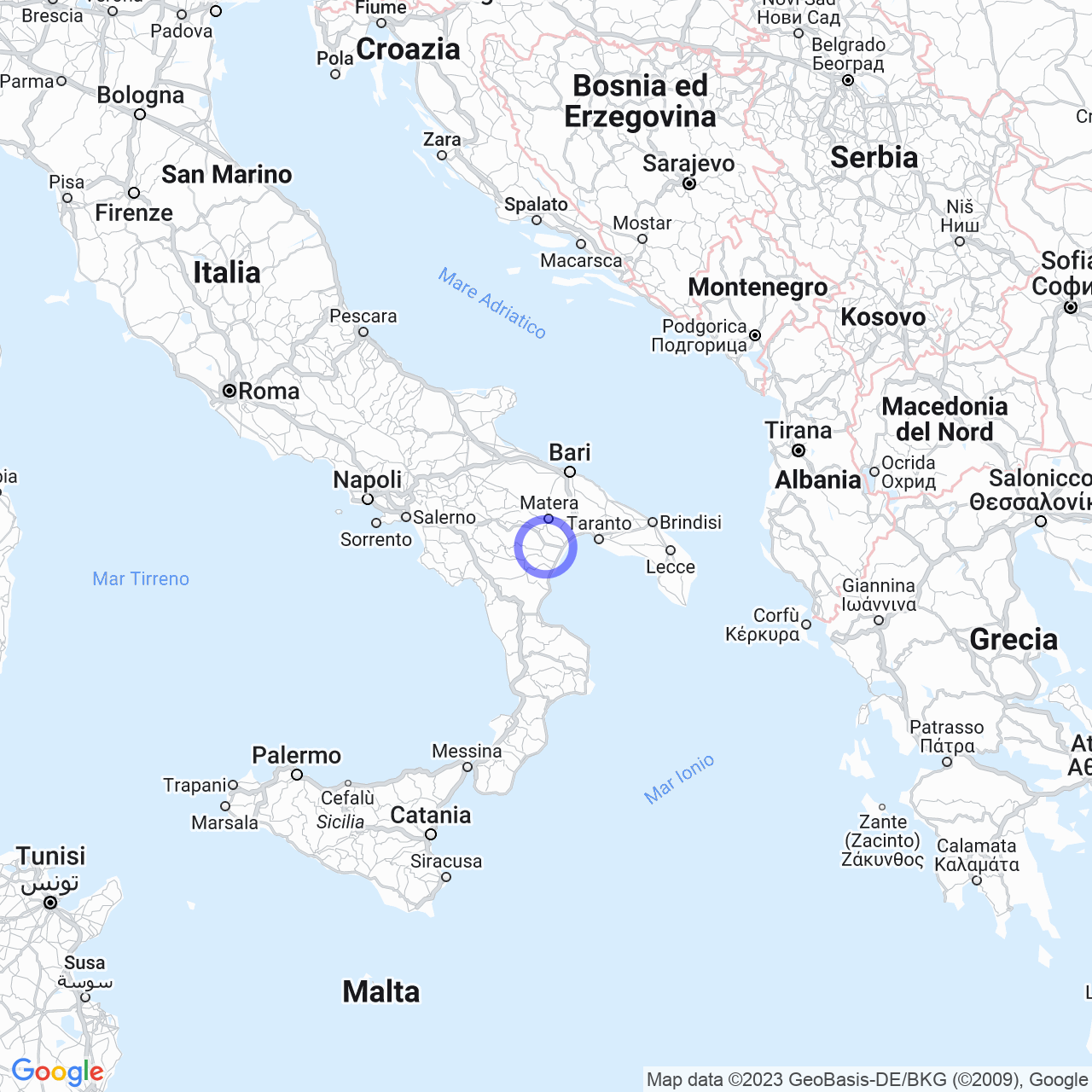Marconia
Welcome to Marconia: a brief introduction
Hello friends, today I will talk about Marconia, the main hamlet of the municipality of Pisticci in the province of Matera. Marconia has 8,781 inhabitants and is the new settlement of the municipality of Pisticci, thanks to its flat location. In this article, I will tell you about Marconia's physical geography and its historical characteristics.
Physical geography
Marconia is easily accessible from the provincial road that connects Pisticci to San Basilio, a seaside resort in Pisticci. The entrance road that leads to the town is called Viale Ontario and leads directly to the main square, Piazza Elettra. The latter is named after the daughter (and ship) of Guglielmo Marconi, and here you can admire the typical fascist architecture of the hamlet. In the square, in addition to the littoria tower and the church, there are various offices such as the headquarters of the Pisticci municipal delegation and the office of the Lucanian Aqueduct. The rest of the town is laid out in a checkerboard pattern consisting of apartment buildings occupied by entire families, villas, row houses, and some popular buildings. Most of the currently resident population of Marconia lived the first part of their lives in Pisticci before moving to the hamlet. The bond with the historic center of their municipality remained strong.

History
Marconia was established as a fascist border colony in 1938 in the Bosco Salice area under the name Villaggio Marconi in honor of Guglielmo Marconi. Initially, political dissidents were forced to live there and were tasked with hydraulic-forestry reclamation work and the reclamation of the swampy and unhealthy lands of the Metapontine plain. After the dissolution of the colony, which occurred with the fall of fascism in 1943, some prisoners returned to their hometowns, while others moved to Pisticci, but many chose to stay there.
The urban center became a hamlet of Pisticci and remained sparsely populated until the 1960s, when the migratory flow of Pisticcesi, but also of people from other countries, increased. Until the 1970s, Marconia was a simple hamlet that did not offer many services and recreation to its residents, who as soon as possible went to Pisticci in the old settlement.
The rather difficult conditions of the historic center of Pisticci forced the transfer of part of the disadvantaged to new public housing built in Marconia with the intention of recreating in a better area located on the plain the municipality of Pisticci. Since then, urban development has never stopped and the hamlet has been expanded and enlarged.
Conclusions
Here, friends, I have told you a bit about Marconia, the largest hamlet of Pisticci. A location with an important history and a strategic position for the daily life of its inhabitants. I hope to have intrigued you and I wish you to visit this charming town soon.
